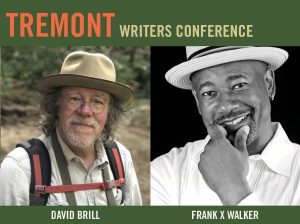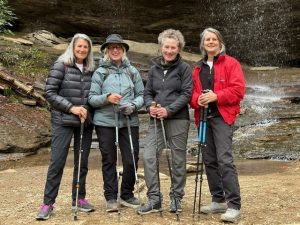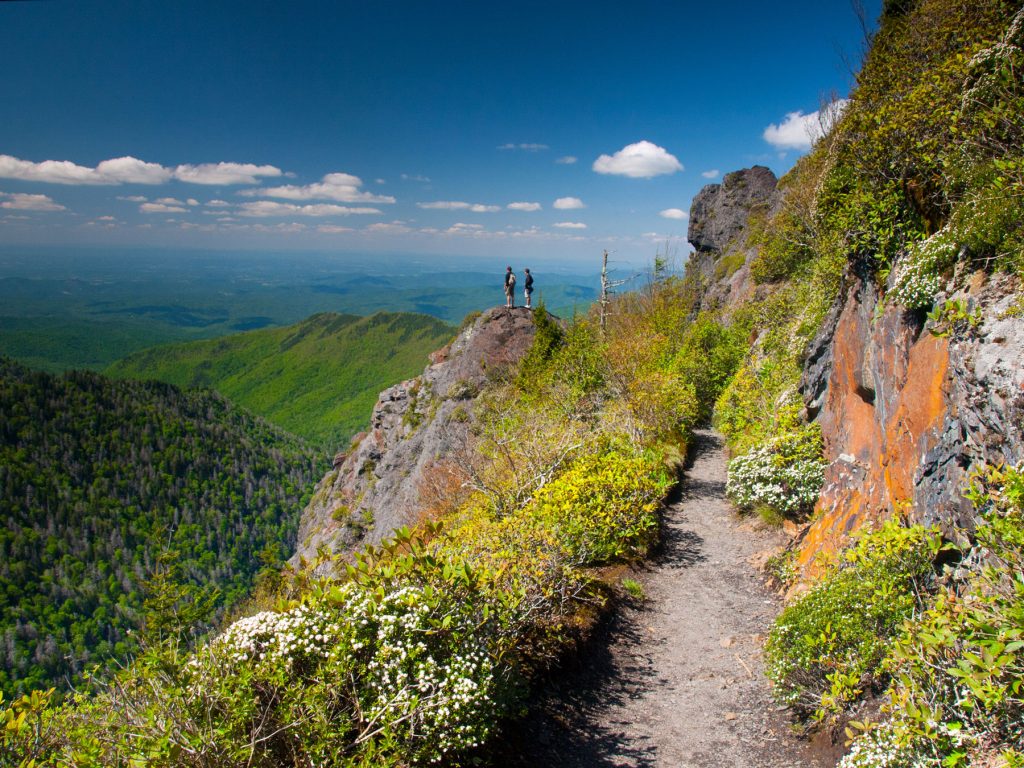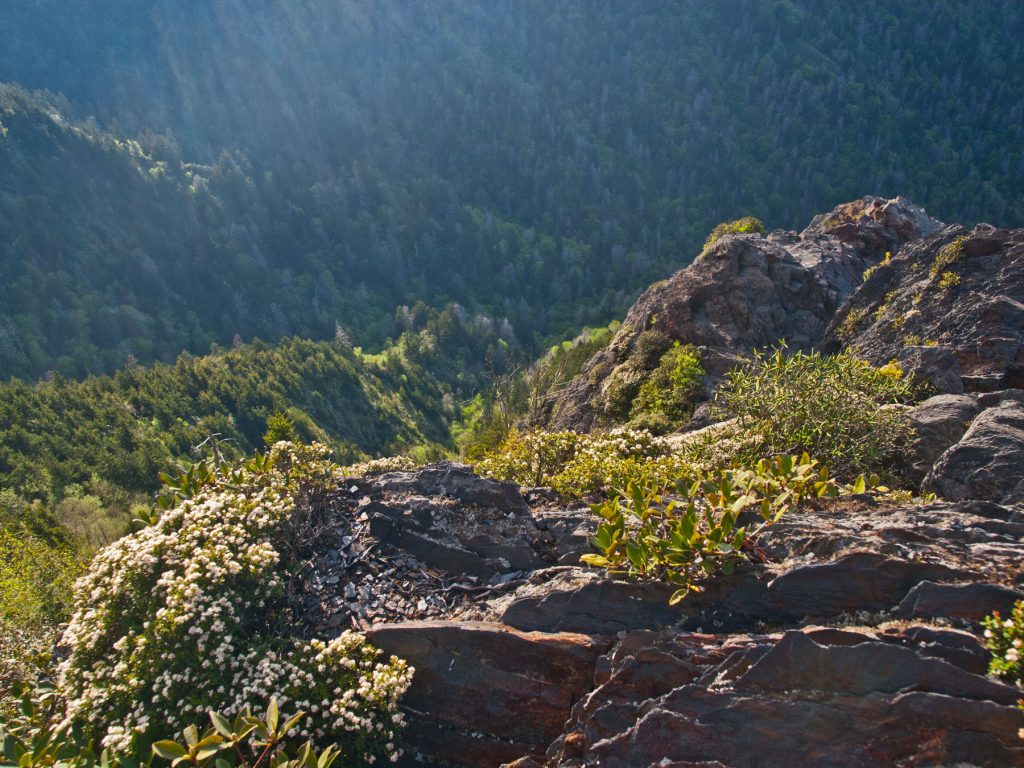
April 30 deadline to apply for Tremont Writers Conference
Frank X Walker and David Brill share a fascination with the Great Smoky Mountains. One

Frank X Walker and David Brill share a fascination with the Great Smoky Mountains. One


As the days grow warmer and the landscape ripples with color, a growing treetop chorus

Two decades ago, thousands of flies, bugs, and beetles met their end in insect traps

In the heart of Great Smoky Mountains National Park, the arrival of spring unveils a
Charlies Bunion will never be mistaken for one of the Great Smoky Mountains’ majestic peaks.
It is rugged and ragged—a sort of obstructive bump on the landscape near Mount Le Conte, its much more impressive neighbor. But the Bunion is worth a look, either onsite or from nearby trails. And in a park noted for ridge after ridge of unusual names, Charlies Bunion stands tall.

Although there has always been a certain amount of curiosity surrounding the name of outcropping, about the only thing that seems to be universally true about its origins is that it involved one of Charlie Conner’s feet. Beyond that foothold, there is confusion.
Ken Wise, professor and Smokies historian at the University of Tennessee, Knoxville, tells the most familiar version of the story:
“Horace Kephart and George Masa (whose photographs were instrumental in the park’s formation) were camping out somewhere in the upper Bradley Fork drainage, and Charlie Conner was their guide. Both Kephart and Masa were on the North Carolina Nomenclature Committee, and thus it was their responsibility to identify names for the various Smoky Mountain landmarks on the North Carolina side of the mountain (although Charlies Bunion is on the Tennessee side). Masa and Conner went exploring along the main Smoky divide and climbed over the knob that later became known as Charlies Bunion. Back at camp, Conner was describing to Kephart the shape of the rocky outcropping, which he depicted as being like the bunion on his toe. Kephart responded to Conner with a remark about naming the knob ‘Charlies Bunion.’ Kephart followed through, and the name soon became official.”
Other versions of the Bunion naming toe a different line, however.
Research by Janet McCue, co-author of Back of Beyond: A Horace Kephart Biography, produced an article from the January 11, 1948, edition of the Knoxville News-Sentinel that tells an alternate story. Hugh F. Hoss, a writer for the Sentinel, met Conner when they shared a room in a Knoxville hospital that year. Charlie shared the Bunion story with Hoss.
“Charlie didn’t actually have a bunion on either of his feet—doesn’t now, but he suffered from ingrowing toenails and referred to them as his ‘bunion,’” Hoss wrote. The story continued to describe the hike with Kephart and Masa. “When we went over this little knoll, my feet were hurtin’ . . . and we talked about it,” Conner told Hoss. “I said I guessed this place was just my bunion. So when we got to camp, I told Kephart, ‘I’ve found my bunion.’ He said, ‘Good; we’ll put it down on a Government map.’ They did just that.”
In Place Names of the Smokies, Allen R. Coggins writes that the Bunion’s name origin has been “variously interpreted by numerous writers” but adds that the essence of the story includes Conner “hobbling along” on the trip with Kephart as they surveyed erosion damage from a powerful storm. “When interviewed later about the incident, Conner did not recall having a bunion,” Coggins wrote.
Smokies historian Michael Frome confirms that part of the story in Strangers in High Places, his history of the park. Frome wrote that he interviewed Conner at his home in Pigeon Forge, Tennessee, when Conner was in his 70s. He asked about the bunion, and Conner said he didn’t have one. “He couldn’t quite recollect whether he had been afflicted with an ingrown toenail, a turned ankle, or a sore foot,” Frome wrote. “It must have been one of those three because he had removed his shoe, whereupon Kephart, gifted with imagination, volunteered, ‘I’m going to get this put on a Government map for you.’”

A final element that adds to the confusion surrounding Charlies Bunion is that— like any other site in the Smokies with a seemingly possessive name—it never received its possessive apostrophe. When you see it written that way (Charlies Bunion), it isn’t a misprint. Give credit—or blame—for this to the US Board on Geographic Names, which banished possessive apostrophes for geographic place names long ago.
The full story of the Bunion’s naming might never be known. The name game was quite laissez-faire in those days as, across the Appalachians, new settlers were rebranding mountains and other features that Native Americans had originally named. Nevertheless, its labeling on various park maps certainly gives the site more prominence—so to speak—than if it carried a less colorful name like Maple Point or Park Rock. The name “Charlies Bunion” at least sparks curiosity.
Those interested in having the Bunion experience can start at the Newfound Gap parking lot on US 441. A round-trip hike from Newfound Gap to the Bunion is about eight miles, including some relatively steep terrain, so it’s not a trip to approach casually—and definitely not with brand-new boots. Roots and rocks must be navigated here and there, but the views along the way are spectacular on a clear day.
To reach the feature, walk east from Newfound Gap on the Appalachian Trail (AT) for about four miles. You can see Charlies Bunion from the trail ridge, and a short spur trail off the AT provides access to the Bunion itself.
Hikers using the Boulevard Trail via the AT to go to the summit of Mount Le Conte sometimes put in extra mileage to visit the Bunion.
If you’re looking for the guy who was inspired by Charlie’s story enough to name this feature “Charlies Bunion,” you’ll pass his namesake—Mount Kephart—on the way to your overlook, close to the AT’s junction with the Boulevard Trail.
McCue also reports that when Masa Knob, a peak halfway between Charlies Bunion and Mount Kephart, was officially approved in 1961, Charlie Conner quipped, “I am glad Masa had this honor close to my Bunion” (Knoxville Journal, May 17, 1961).
The Great Smokies Welcome Center is located on U.S. 321 in Townsend, TN, 2 miles from the west entrance to Great Smoky Mountains National Park. Visitors can get information about things to see and do in and around the national park and shop from a wide selection of books, gifts, and other Smokies merchandise. Daily, weekly, and annual parking tags for the national park are also available.